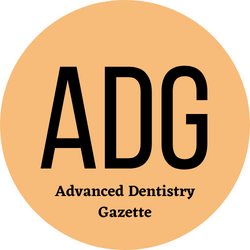Exploring the Fundamentals of Diagnostic Dentistry: A Comprehensive Guide
by siteadmin

Diagnostic dentistry is the cornerstone of modern dental practice, playing a crucial role in identifying oral health issues and formulating effective treatment plans. By utilizing a variety of techniques and technologies, dental professionals can accurately assess patients’ oral conditions, enabling them to deliver personalized care tailored to individual needs. In this article, we delve into the fundamentals of diagnostic dentistry, exploring its key principles, methodologies, and significance in maintaining optimal oral health.
Understanding the Importance of Diagnostic Dentistry:
Diagnostic dentistry encompasses the assessment, diagnosis, and management of oral health conditions, ranging from common dental caries to complex periodontal diseases. Through thorough examination and analysis, dentists can detect abnormalities, identify risk factors, and intervene at the earliest stages of disease progression. By doing so, they can prevent further deterioration of oral health and preserve natural dentition, ultimately enhancing patients’ overall well-being.
Key Components of Diagnostic Dentistry:
- Patient History: The diagnostic process often begins with a comprehensive review of the patient’s medical and dental history. This information provides valuable insights into existing health conditions, past treatments, and potential risk factors that may impact oral health.
- Clinical Examination: A thorough clinical examination is essential for evaluating the oral cavity, including the teeth, gums, soft tissues, and supporting structures. Dentists use specialized instruments and techniques to assess various aspects of oral health, such as tooth decay, gum disease, oral lesions, and occlusal abnormalities.
- Radiographic Imaging: Radiographs, including intraoral and extraoral X-rays, play a vital role in diagnostic dentistry by providing detailed images of the teeth and surrounding structures. These imaging modalities enable dentists to visualize hidden pathology, assess bone density, and detect abnormalities not visible during clinical examination alone.
- Diagnostic Tests: In certain cases, diagnostic tests such as bacterial cultures, saliva analysis, and genetic testing may be utilized to aid in the diagnosis of specific oral conditions. These tests help identify causative factors, assess disease severity, and guide treatment planning for optimal outcomes.
- Digital Technology: The advent of digital technology has revolutionized diagnostic dentistry, offering advanced tools and techniques for enhanced precision and efficiency. Digital intraoral scanners, cone-beam computed tomography (CBCT), and computer-aided design/computer-aided manufacturing (CAD/CAM) systems enable dentists to capture detailed images, create virtual models, and fabricate custom restorations with unparalleled accuracy.
Clinical Significance and Applications:
Diagnostic dentistry plays a pivotal role in a wide range of clinical scenarios, including routine dental check-ups, preventive care, restorative treatments, and periodontal therapy. By accurately diagnosing oral health issues and establishing baseline data, dentists can develop tailored treatment plans focused on addressing patients’ specific needs and goals. Additionally, early detection of oral diseases through diagnostic dentistry can lead to timely intervention, minimizing the need for extensive procedures and preserving natural tooth structure whenever possible.
In summary, diagnostic dentistry forms the foundation of effective oral healthcare, enabling dentists to assess, diagnose, and manage a diverse array of oral conditions. By employing a combination of patient history, clinical examination, radiographic imaging, diagnostic tests, and digital technology, dental professionals can deliver comprehensive care that prioritizes patient well-being and long-term oral health outcomes. Embracing the fundamentals of diagnostic dentistry empowers dental practitioners to provide personalized treatment solutions tailored to each individual’s unique needs, ultimately promoting a lifetime of healthy smiles.
Diagnostic dentistry is the cornerstone of modern dental practice, playing a crucial role in identifying oral health issues and formulating effective treatment plans. By utilizing a variety of techniques and technologies, dental professionals can accurately assess patients’ oral conditions, enabling them to deliver personalized care tailored to individual needs. In this article, we delve into…
Recent Posts
- Innovation Tree Service of Irvine Unveils Premium Tree Cutting Services
- Stucco Repair Philadelphia Brings Top-Notch Solutions to Philadelphia Homeowners
- The Trusted Name in Roofing Services Expands to Columbus, GA
- Gateway Plumbers of Aurora: The Trusted Name in Water Heater Repair
- Oasis Landscaping of Harrisburg Enhances Outdoor Spaces in Harrisburg with Expert Landscape Lighting Solutions
